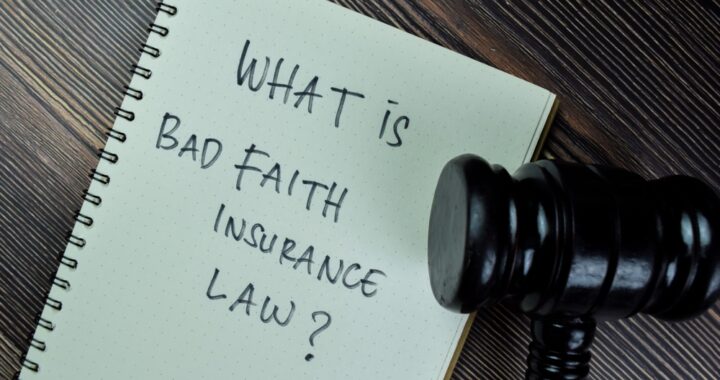Let’s talk about a statutory first-party bad faith claim against an insurer under Florida law. A recent opinion, discussed below, does a nice job providing a synopsis of a first-party statutory bad faith claim against an insurer:
The Florida Legislature created the first-party bad faith cause of action by enacting section 624.155, Florida Statutes, which imposes a duty on insurers to settle their policyholders’ claims in good faith. The statutory obligation on the insurer is to timely evaluate and pay benefits owed under the insurance policy. The damages recoverable by the insured in a bad faith action are those amounts that are the reasonably foreseeable consequences of the insurer’s bad faith in resolving a claim, which include consequential damages.
“[A] statutory bad faith claim under section 624.155 is ripe for litigation when there has been (1) a determination of the insurer’s liability for coverage; (2) a determination of the extent of the insured’s damages; and (3) the required [civil remedy] notice is filed pursuant to section 624.155(3)(a).”
“An insured may obtain a determination of the insurer’s liability and the extent of their damages by litigation, arbitration, settlement, stipulation, or the payment of full policy limits.” Additionally, payment of an appraisal award by the insurer constitutes a determination of the insurer’s liability and the extent of the insured’s damages.
Cingari v. First Protective Ins. Co., 49 Fla.L.Weekly D89a (Fla. 4th DCA 2023) (internal citations omitted).
The fact pattern in this case is somewhat nutty. This case dealt with a homeowner’s property insurance policy. The homeowners discovered cracks in their walls and submitted an insurance claim. The insurer issued two partial payments. However, the homeowner felt its insurer was not properly adjusting the claim and filed a Civil Remedy Notice as the perquisite for a statutory bad faith claim. The homeowner subsequently invoked the appraisal process in the policy. The insurer agreed and the claim proceeded through the appraisal process (after a lawsuit was initiated for the court to appoint the umpire to preside over the appraisal process). The umpire found damages more than the partial payments paid by the insurer resulting in the insurer paying the policy limits under the policy. The homeowner then filed a bad faith action against its insurer for failing to timely and properly adjust the loss. The insurer moved for summary judgment arguing that AFTER it paid the policy limits it discovered that the loss (that it paid for) was, in fact, excluded under the policy by an earth settlement exclusion. The trial court agreed with the insurer that because there was no coverage, there could be no bad faith claim against the insurer.
The appellate court concluded differently under the facts of the case: “we conclude the trial court erred in accepting the insurer’s argument that because no coverage existed, the homeowner was not entitled to litigate whether the insurer acted in bad faith.” Cingari, supra. Why did the appellate court conclude differently? Two main reasons:
(1) The insurer never raised that “no coverage exists” to the umpire during the appraisal process.
(2) “[T]he focus of a first-party bad faith claim is whether the insurer in good faith timely and property investigated and resolved claims filed by the insured.” Cingari, supra. In other words, the focus centers on the insurer’s investigation of the cause of the loss. Remember, the insurer argued it did not discover the basis of the exclusion until AFTER it paid the policy limits per the appraisal process.
[T]he insurer’s statements that it ‘proceeded under an erroneous policy interpretation’ in the umpire appointment suit [for the appraisal] and ‘gratuitously’ paid the policy limits and appraisal award certainly raise an inference that the insurer did not properly investigate the claim. The homeowner argued…that the failure to properly investigate caused the insurer to improperly extend settlement of the claim through the appraisal process. In doing so, the insurer arguably violated the requirements in section 624.155(1)(b)1. and 2., Florida Statutes (2020), to ‘attempt[] in good faith to settle claims’ and ‘promptly settle claims[.]
Cingari, supra.
Please contact David Adelstein at dadelstein@gmail.com or (954) 361-4720 if you have questions or would like more information regarding this article. You can follow David Adelstein on Twitter @DavidAdelstein1.



 In a first party bad-faith lawsuit, such as a bad faith claim against an insured’s property insurer, there are three requirements that must be met before the bad faith lawsuit is filed: “‘(1) determination of the insurer’s liability for coverage; (2) determination of the extent of the insured’s damages; and (3) the required notice must be filed under section 624.155(3)(a).’”
In a first party bad-faith lawsuit, such as a bad faith claim against an insured’s property insurer, there are three requirements that must be met before the bad faith lawsuit is filed: “‘(1) determination of the insurer’s liability for coverage; (2) determination of the extent of the insured’s damages; and (3) the required notice must be filed under section 624.155(3)(a).’”

